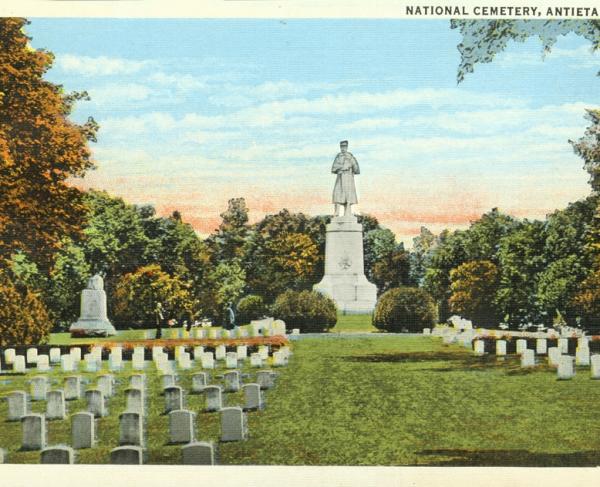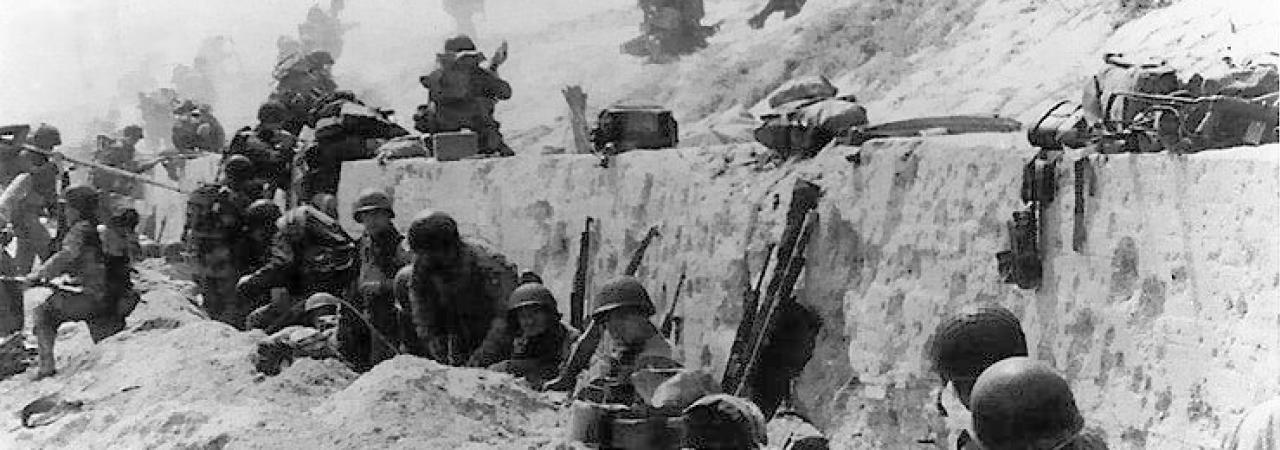
Colonel William J. Worth formed the 8th U.S. Infantry Regiment, nicknamed the “Fighting Eagles,” on July 5, 1838, in West Troy, New York. After raising the various companies, the government immediately assigned Col. Worth and the 8th to prevent aggressions from U.S. sympathizers of a Canadian insurrectionist party known as “The Patriots.” Companies of the 8th patrolled the St. Lawrence River, were assigned to U.S. vessels navigating the waterway, and guarded the northern border of New York State with Canada until the spring of 1840.
The 8th moved to the Wisconsin Territory for action against the Winnebago Indians in April, successfully negotiating that tribe’s removal west of the Mississippi River. After a short stay at Jefferson Barracks, Missouri, the regiment transferred to Florida in September 1840 to aid in the prosecution of the Seminole Indian War. The regiment spent the next several years in pursuit of the Seminole tribes, leading to the surrender of some Seminoles at Ft. Brooke.
In 1845, the 8th received orders to join Zachary Taylor’s Army of Occupation in Corpus Christi, Texas, at the start of the Mexican-American War. Beginning with a defensive action at Palo Alto, the regiment participated in the Battle of Monterrey – the first major amphibious landing of the U.S. Army at Vera Cruz – and the battles at Cerro Gordo and Contreras. However, their most brilliant exploit of the war took place at Churubusco. Capt. J.V. Bomford, Lt. James Longstreet, and Lt. George Pickett led the regiment through one of the fort’s embrasures in advance of all other U.S. forces. Later, at Chapultepec, Picket took the regimental colors from a wounded Longstreet and raised them atop the fortress when it fell. The regiment remained in the advance to the San Cosme gate of Mexico City, which turned out to be its last action of the war. Departing Mexico, the 8th returned to Jefferson Barracks, later receiving orders to return to garrison duties in Texas in December 1848.
In Texas, an outbreak of Asiatic cholera plagued the 8th, leading to Worth’s death on May 7, 1849. For the next 12 years, the 8th served in company strengths among the forts and camps of Texas. The infantry fought skirmishes with Native American bands, participated in clashes with Cortina’s outlaws, and scouted for various expeditions.
In April 1861, Gen. Daniel E. Twiggs, commanding the Department of Texas, ordered the regiment to leave the state by way of the coast as the situation in the East deteriorated. Unfortunately, the evacuation route allowed newly organized Confederate forces to capture the entire regiment. Eleven of the regiment’s officers later joined the Confederates. However, two regimental members, Sgt. Maj. Joseph K. Wilson and Corp. John C. Hesse, saved the tattered regimental colors from the Mexican-American war, smuggling them north from San Antonio. Both later received a Medal of Honor for that act. Gen. Nathaniel Banks bestowed the regimental motto “Patriae Fidelitas” meaning “Loyalty to Country” in a discussion recognizing the two men for their actions
Regimental reorganization began in May 1861 at Ft. Wood in New York Harbor, with the formation of new companies of the 8th U.S. Infantry. Company G participated in First Manassas and then joined Company F as provost guards in Washington. Companies A and D, once formed, joined the Army of Virginia under Gen. Banks and participated in the Battle of Cedar Mountain on August 9, 1862. Those companies participated in the Union attack on the Confederate right that nearly succeeded in breaking the enemy line. In the early evening Confederate counterattack, the 8th faced a charge down Cedar Mountain by troops led by Brig. Gen. Isaac B. Trimble. After the battle, the Federals retreated to Alexandria.
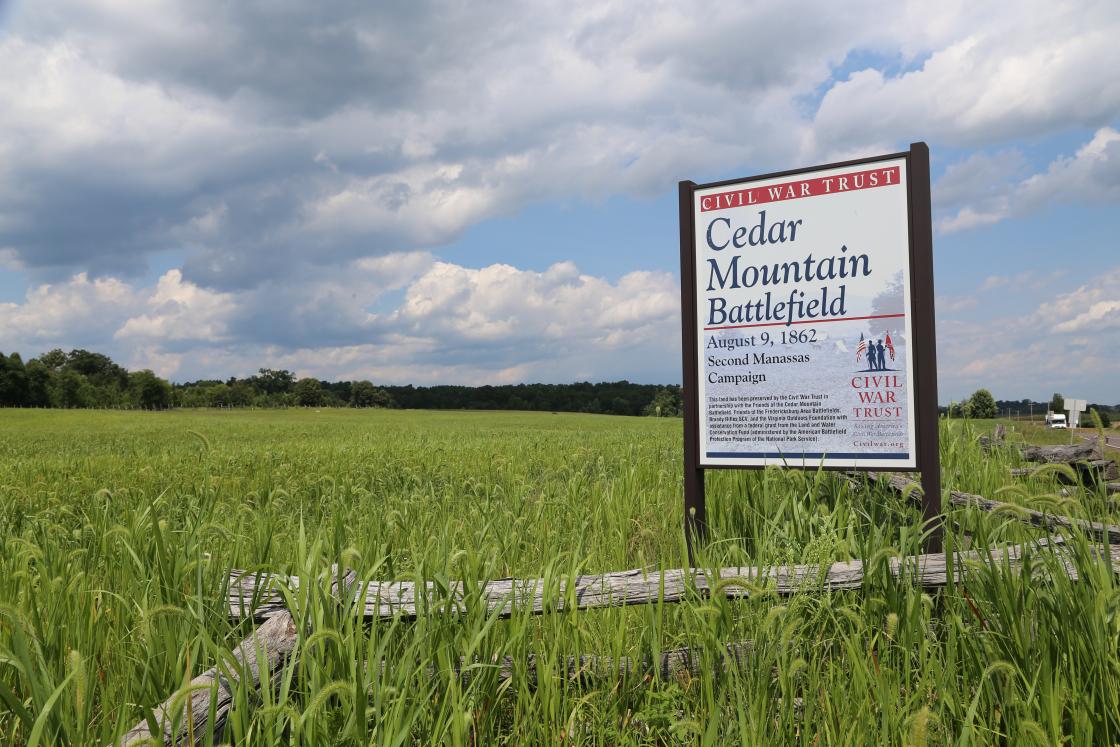
By the Battle of Antietam, Companies B and C joined Companies A, D, F and G. The 8th then served as provost guards for the Army of the Potomac. The regiment remained on that assignment through the Gettysburg Campaign. In mid-July, the regiment moved to New York City as part of the forces that suppressed the ongoing draft riots. They camped on the Battery and in City Hall Park from July 17 to Aug. 22, 1863. The regiment remained in New York Harbor through April 23, 1864, helping to suppress a mutiny among certain New York volunteers.
In April 1864, the 8th departed for Warrenton, VA, where it became the provost guard for the 9th Army Corps. In November, the regiment removed to Buffalo, NY, to preserve order during the presidential election, and then served the remainder of the war in Delaware and Maryland.
In 1866, the companies of the 8th received orders to posts in North Carolina, South Carolina, and Virginia to enforce Reconstruction law. They remained in the Carolinas until 1870, at which point, the regiment returned to David’s Island, New York Harbor to potentially deploy to San Domingo and protect U.S. interests on the island. Instead, the 8th deployed in battalion strength to Chicago in 1871 to protect lives and property following the Great Chicago Fire. They remained there until May 1872, when the regiment’s two battalions were divided between missions in Utah and the Department of the Platte.
The next decade saw the 8th participating in various garrison duties in Arizona and California, such as the Nez Pierce conflict, Apache uprisings, and the pursuit of Geronimo. The unit transported Native American prisoners to Florida and returned, moving on to serve again in the Department of the Platte, and then in the 1890s at Ft. McKinney.
When the Spanish-American War broke out in 1898, seven companies of the 8th U.S. Infantry joined the First Brigade, 2nd Division of the Fifth Army Corps and participated in the assaults on Santiago. Stubborn Spanish resistance at El Caney prevented the 8th from joining in the assault at the San Juan Heights. At the conclusion of action in the Caribbean, one company served in peacekeeping duties in Puerto Rico, while the remainder returned to New York. In 1913, the 8th deployed to the island of Jolo in the Philippines to aid in the suppression of the Moros. Led by Gen. John ‘Black Jack’ Pershing, the U.S. forces completely destroyed a Moro stronghold, including killing their leader, Datu Amil, in the June 1913 Battle of Bud Bagsak.
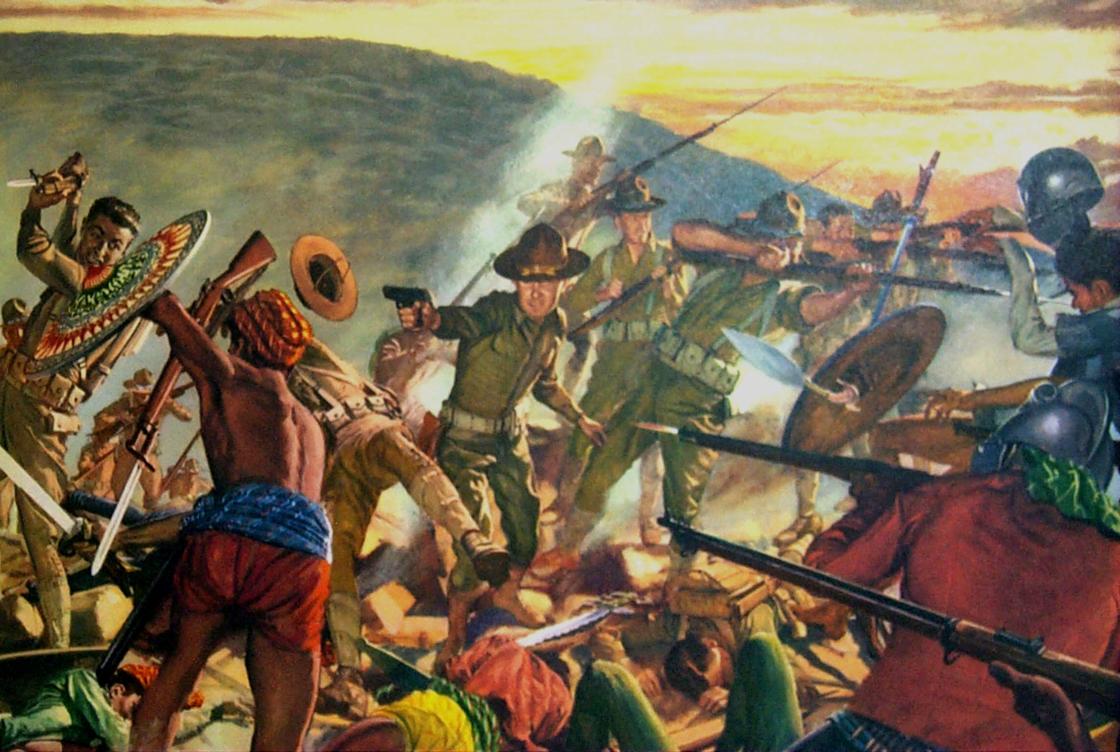
The 8th U.S. Infantry Regiment did not see active duty service in World War I. Assigned to the 8th Infantry Division, the regiment was en route to Europe when the opposing forces declared an armistice and ended the war. However, the 8th did serve as part of the army of occupation post-armistice.
In World War II, assigned to the 4th Infantry Division, the 8th deployed to England in January 1944. The regiment participated in the Normandy assaults on D-Day as part of 4th Infantry Division, Seventh Corps, assaulting Utah Beach under the command of Maj. Gen. Raymond O. Barton in the overall command of Gen. Omar Bradley. The regiment went on to participate in the campaigns in Northern France, Rhineland, Ardennes-Alsace, and Central Europe. The 8th received a Presidential Unit Citation for its actions on the beaches of Normandy. The regiment returned to Camp Butner, NC, in August 1945.
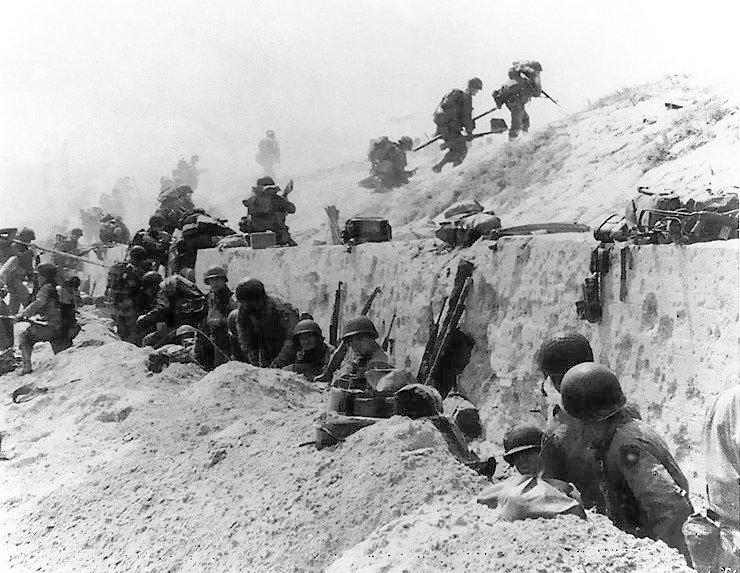
The 8th U.S. Infantry reactivated in 1947, assigned to Ft. Ord, California, remaining assigned to the 4th Infantry Division. Then, in 1966, the first three battalions of the 8th deployed to Vietnam, fighting in 9 campaigns and 4 operations through 1970. The units earned two Presidential Unit Citations for their actions in Vietnam. During the Cold War, the Fourth Battalion of the 8th U.S. Infantry Regiment was assigned to Coleman Barracks in Sandhofen, Germany.
In modern times, battalions of the 8th U.S. Infantry Regiment served in Operation Iraqi Freedom, with multiple deployments to Iraq, and in Operation Enduring Freedom, with deployments to Afghanistan and Kuwait. Most recently, the 8th US Infantry was reported serving in Operation Atlantic Resolve in 2017.
This will be the only chance we will ever have to protect these 97 acres at Brandy Station, and the other 7 acres near Cedar Mountain, and we urgently...
Related Battles
2,353
1,338
2,896
1,982
12,401
10,316



